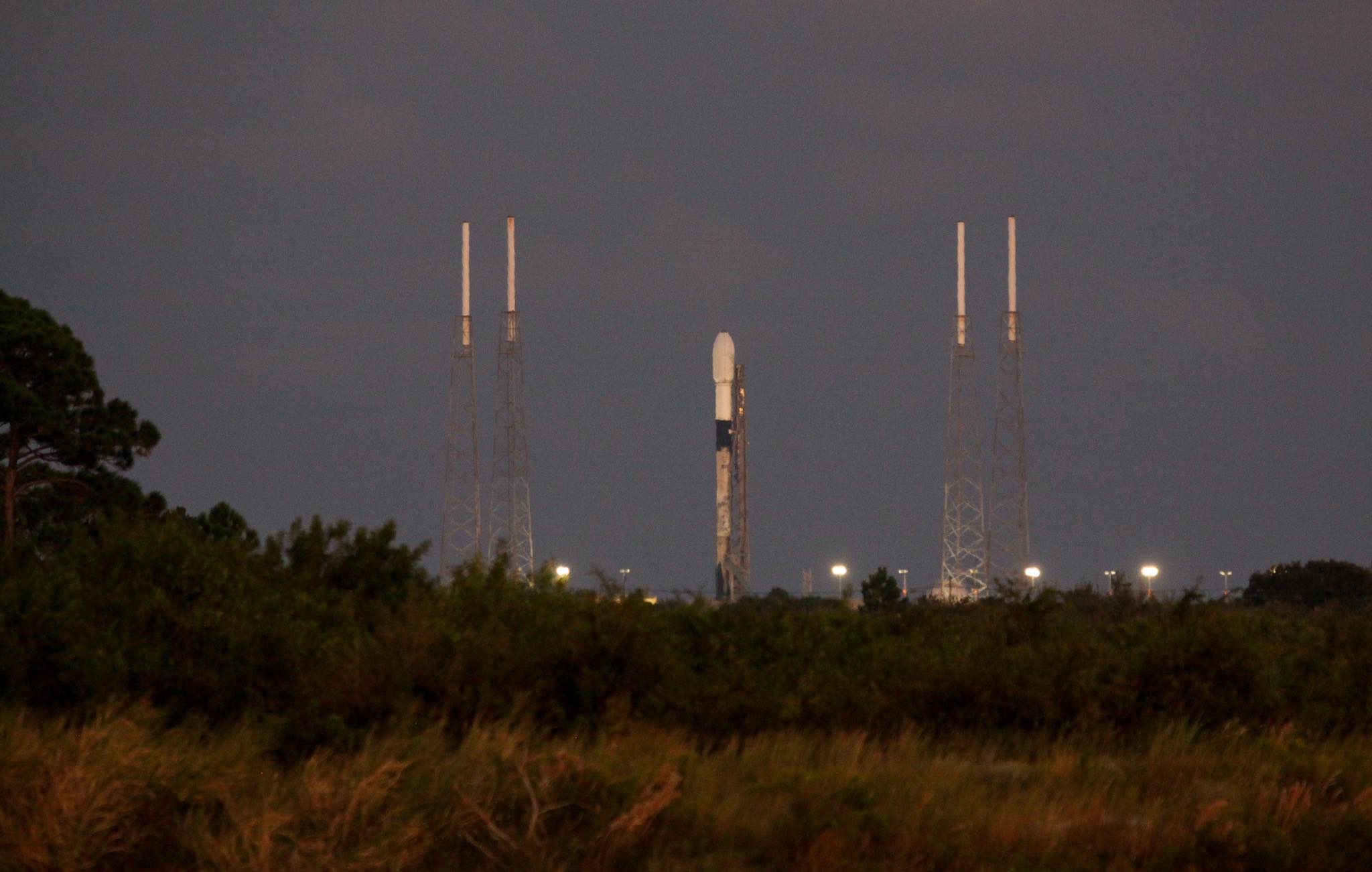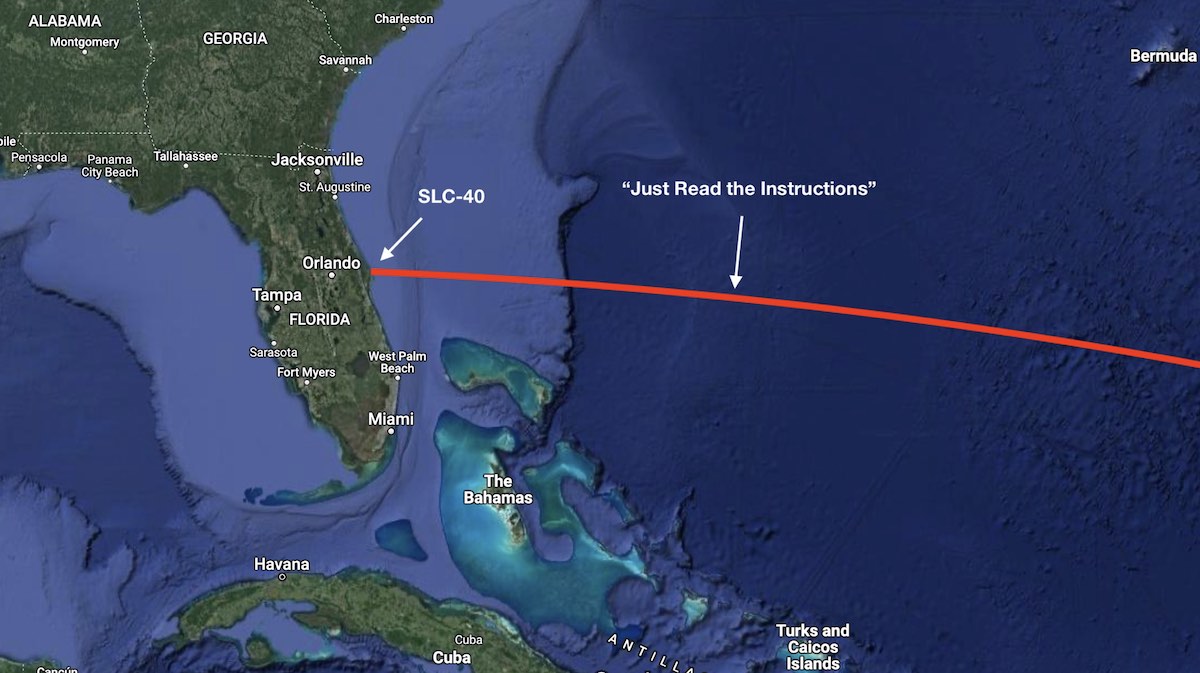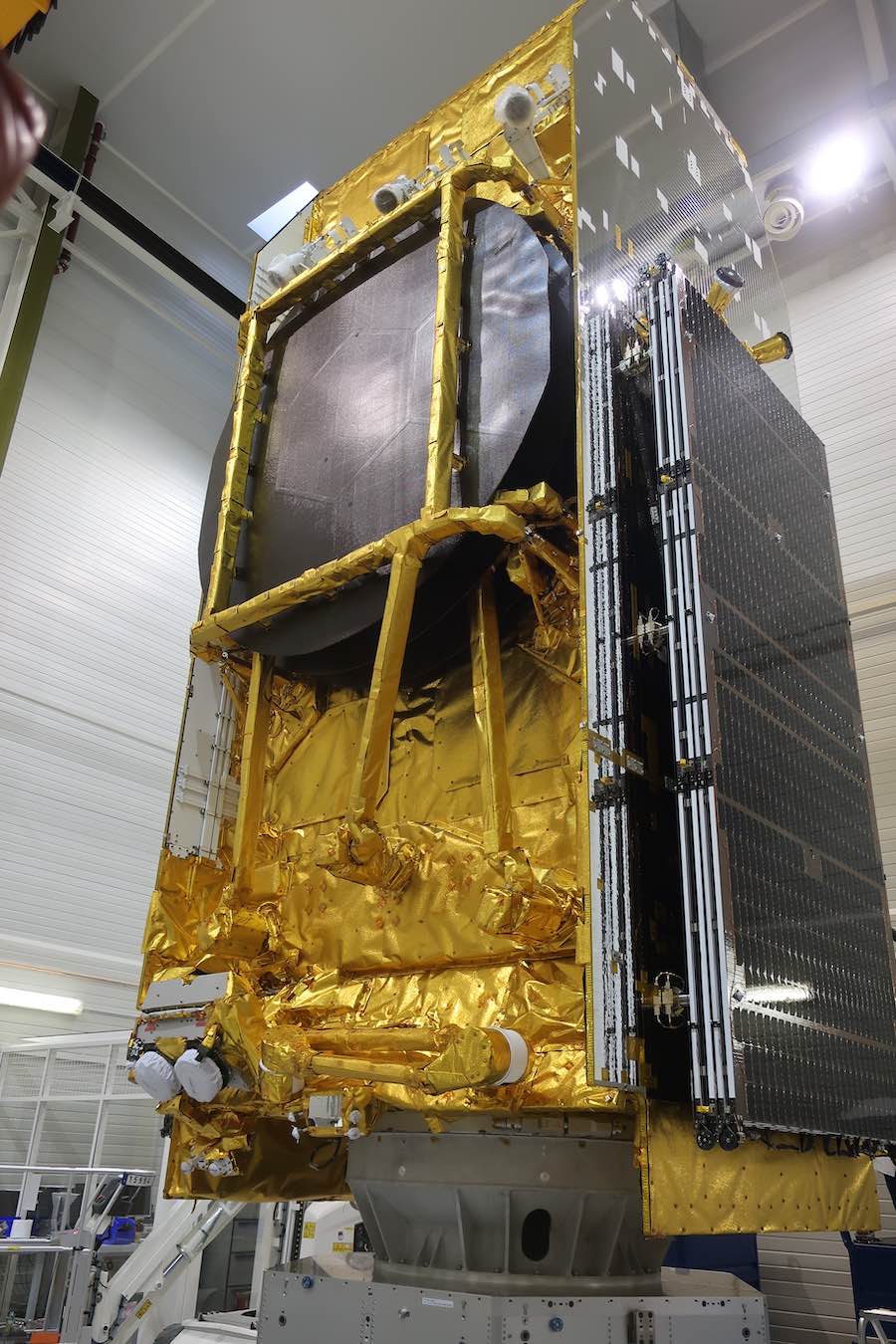Live coverage of the countdown and launch of a SpaceX Falcon 9 rocket from Space Launch Complex 40 at Cape Canaveral Space Force Station, Florida. The Falcon 9 rocket will launch Eutelsat’s Hotbird 13F geostationary communications satellite. Follow us on Twitter.
SFN Live
A SpaceX Falcon 9 rocket blasted off at 1:22 a.m. EDT (0522 GMT) Saturday with Eutelsat’s Hotbird 13F television broadcasting satellite. The mission marked the 100th launch by SpaceX from pad 40 at Cape Canaveral Space Force Station in Florida.
Built by Airbus, the 9,868-pound (4,476-kilogram) Hotbird 13F spacecraft will beam hundreds of television and radio channels across Europe, the Middle East, and North Africa. Hotbird 13F is the first satellite to be built on Airbus’s new Eurostar Neo spacecraft design, incorporating upgrades in propulsion, thermal control, and electrical systems.
The 116-minute launch window opened at 11:26 p.m. EDT Friday (0326 GMT Saturday) and ran until 1:22 a.m. (0522 GMT). Forecasters from the U.S. Space Force’s 45th Weather Squadron predicted a 90% probability of favorable weather for liftoff, with only a slight chance of cumulus clouds that might create a threat of lightning.
A frontal boundary moved through Central Florida earlier Friday.
“Drier, cooler air along with higher winds filtering in from the north in the wake of the front should tamper any significant shower coverage this weekend and result in favorable launch conditions for both the primary and backup launch opportunities,” the weather team wrote in the official launch weather forecast.
SpaceX delayed the launch time to the end of the launch window to allow additional time for data review. The company did not elaborate on the reason for the data review.
The launch early Saturday was the fourth flight of a Falcon 9 rocket this month, following three Falcon 9 launches in as many days last week.
In preparation for Saturday’s launch, SpaceX ground crews rolled the Falcon 9 rocket and its commercial satellite payload to pad 40, then raised it vertical over the flame trench earlier in the day Friday. During Saturday’s countdown, the 229-foot-tall (70-meter) launcher was filled with a million pounds of kerosene and liquid oxygen propellants in the final 35 minutes before liftoff.
After teams verified technical and weather parameters were all “green” for launch, the nine Merlin 1D main engines on the first stage booster flashed to life with the help of an ignition fluid called triethylaluminum/triethylborane, or TEA-TEB. Once the engines ramped up to full throttle, hydraulic clamps opened to release the Falcon 9 for its climb into space.
The nine main engines produced 1.7 million pounds of thrust for about two-and-a-half minutes, propelling the Falcon 9 and Eutelsat’s Hotbird 13F communications satellite into the upper atmosphere. Then the booster stage — tail number B1069 in SpaceX’s fleet — shut down and separated from the Falcon 9’s upper stage.

The booster extended titanium grid fins and pulsed cold gas thrusters to orient itself for a tail-first entry back into the atmosphere, before reigniting its engines for a braking burn and a final landing burn, targeting a vertical descent to the drone ship “Just Read the Instructions” parked about 410 miles (about 660 kilometers) east of Cape Canaveral.
A successful rocket landing on the drone ship marked the completion of the booster’s third flight to space, following launch last December on a cargo mission to the International Space Station and then on Aug. 27 with a batch of Starlink internet satellites.
The booster was damaged, apparently due to rough seas, after landing on its first mission in December. SpaceX repaired the rocket and returned it to the active rotation of Falcon 9 boosters in August.
On Saturday morning’s mission, the Falcon 9 rocket fired its upper stage engine two times to inject the Hotbird 13F spacecraft into an elliptical geostationary transfer orbit with an apogee, or high point, more than 20,000 miles above Earth.
Hotbird 13F separated from the Falcon 9 rocket about 36 minutes into the mission.
After flying free of its SpaceX launcher, Hotbird 13F will unfurl solar panels and switch on its plasma propulsion system for several months of orbit-raising maneuver to reach a circular geostationary orbit more than 22,000 miles (nearly 36,000 kilometers) over the equator. The orbit-raising using electric propulsion takes longer than maneuvers relying on conventional rocket engines.
Hotbird 13F will orbit in lock-step with Earth’s rotation at 13 degrees east longitude.

By the middle of next year, Hotbird 13F should be ready to enter commercial service to start a 15-year mission broadcasting television programming to Eutelsat customers. Hotbird 13G, set for launch in November on another Falcon 9 rocket, will follow about a month after its twin satellite, heading for the same position in geostationary orbit.
“Hotbird 13F is the first of two satellites to be placed at the Eutelsat flagship 13 degrees east position, so this is an important event for us,” said Pascal Homsy, Eutelsat’s chief technical officer. “It will be the first satellite based on the electric propulsion Eurostar Neo platform by Airbus, fostering innovation and competitiveness in the European space industry.”
Thanks to improvements in satellite communications technology, Eutelsat will only need two new Hotbird satellites to replace the three aging Hotbird spacecraft operating at 13 degree east.
Homsy said the Hotbird fleet at 13 degrees east form the highest capacity satellite broadcasting system covering the Europe, Middle East, and North Africa regions, delivering 1,000 TV channels to more than 160 million homes. Hotbird 13F and 13G will broadcast signals in Ku-band frequencies.
“We have something like over 600 pay TV channels, 300 free to air channels, 450 high definition TV, and 14 ultra high definition channels broadcast from this flagship 13 degrees east position,” Homsy said. “We are able also to provide 500 radio stations and multimedia services.”

ROCKET: Falcon 9 (B1069.3)
PAYLOAD: Hotbird 13F communications satellite
LAUNCH SITE: SLC-40, Cape Canaveral Space Force Station, Florida
LAUNCH DATE: Oct. 14/15, 2022
LAUNCH WINDOW: 11:26 p.m. – 1:22 a.m. EDT (0326-0522 GMT)
WEATHER FORECAST: 90% probability of acceptable weather
BOOSTER RECOVERY: “Just Read the Instructions” drone ship
LAUNCH AZIMUTH: East
TARGET ORBIT: Geostationary transfer orbit
LAUNCH TIMELINE:
- T+00:00: Liftoff
- T+01:12: Maximum aerodynamic pressure (Max-Q)
- T+02:32: First stage main engine cutoff (MECO)
- T+02:35: Stage separation
- T+02:42: Second stage engine ignition
- T+03:22: Fairing jettison
- T+06:29: First stage entry burn ignition (three engines)
- T+06:57: First stage entry burn ends
- T+08:07: Second stage engine cutoff (SECO 1)
- T+08:22: First stage landing burn ignition (one engine)
- T+08:45: First stage landing
- T+29:12: Second stage engine restart
- T+30:10: Second stage engine cutoff (SECO 2)
- T+36:11: Hotbird 13F separation
MISSION STATS:
- 181st launch of a Falcon 9 rocket since 2010
- 189th launch of Falcon rocket family since 2006
- 3rd launch of Falcon 9 booster B1069
- 155th Falcon 9 launch from Florida’s Space Coast
- 100th Falcon 9 launch from pad 40
- 155th launch overall from pad 40
- 122nd flight of a reused Falcon 9 booster
- 3rd SpaceX launch for Eutelsat
- 47th Falcon 9 launch of 2022
- 47th launch by SpaceX in 2022
- 45th orbital launch attempt based out of Cape Canaveral in 2022
Email the author.
Follow Stephen Clark on Twitter: @StephenClark1.
